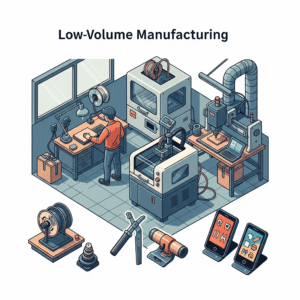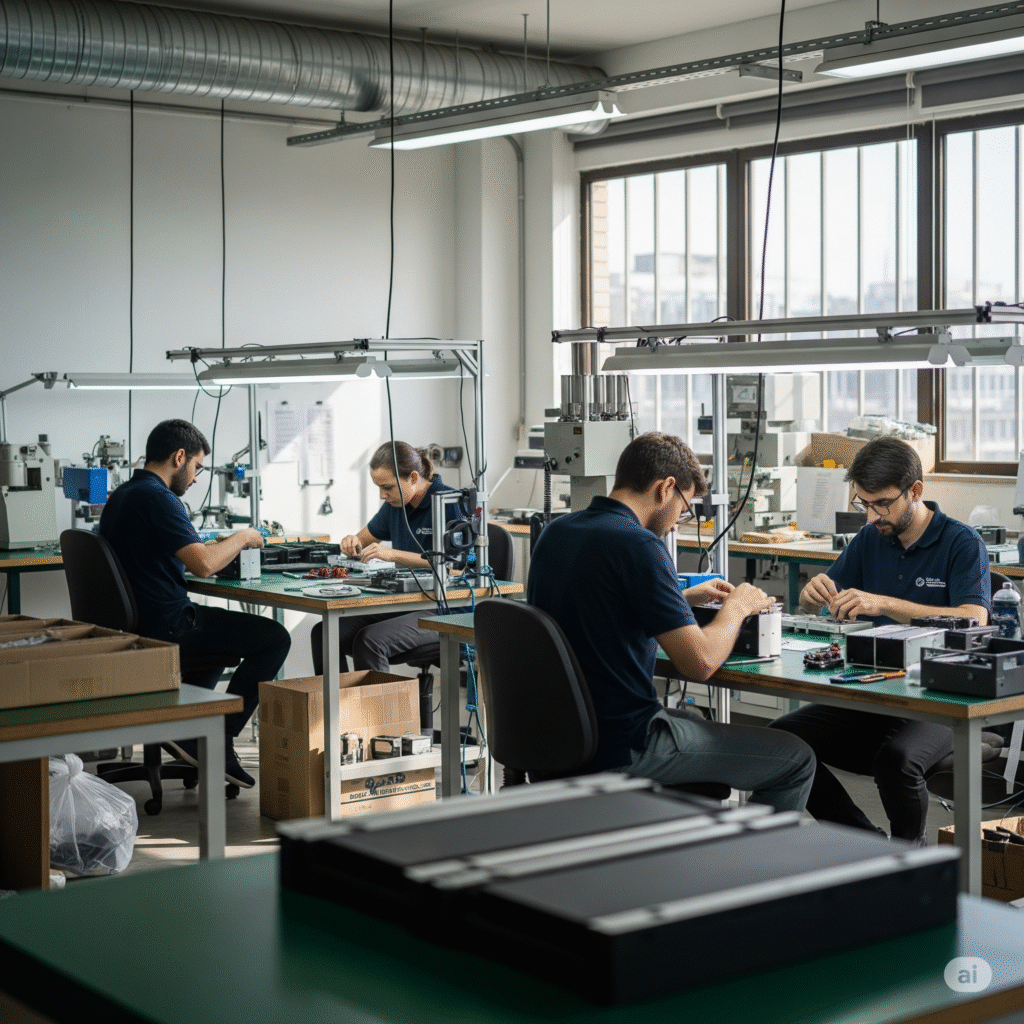Why Small-Batch Production Is Gaining Traction
In the fast-paced world of startups and niche product development, speed, flexibility, and cost-efficiency are critical. Low-volume manufacturing is emerging as the go-to solution for businesses that want to move quickly, test ideas, and minimize financial risk.
Whether you’re a tech startup developing a new gadget or a niche brand offering personalized skincare, low-volume manufacturing provides the agility needed to compete in today’s dynamic market.
What Is Low-Volume Manufacturing?
A Scalable Alternative to Mass Production
Low-volume manufacturing refers to the production of small quantities of products, typically ranging from 50 to 100,000 units, depending on the industry and application. Unlike traditional high-volume production, which requires significant investment and lengthy lead times, low-volume manufacturing emphasizes efficiency, rapid prototyping, and flexible scaling.
Typical Use Cases
-
Startups testing MVPs (Minimum Viable Products)
-
Limited edition or seasonal product lines
-
Pilot runs for market validation
-
Customized or highly specialized products
Benefits of Low-Volume Manufacturing for Startups
1. Reduced Financial Risk
Startups often operate on limited budgets. With low-volume manufacturing, companies avoid tying up capital in large inventories. This approach enables them to invest in only what they need, reducing overhead and minimizing waste.
2. Faster Product Launches
Time-to-market is a decisive factor for early-stage companies. Low-volume production enables faster turnaround, allowing startups to test, iterate, and launch within tight timelines.
3. Better Product Iteration
Launching the perfect product on the first try is rare. With smaller production runs, startups can collect real user feedback, make improvements, and re-launch without the high costs associated with large-scale production errors.

Why Niche Brands Thrive with Low-Volume Manufacturing
1. Customization and Personalization
Consumers in niche markets often look for uniqueness and exclusivity. Low-volume manufacturing supports personalized design, packaging, and formulations, helping brands stand out and connect with their target audience.
2. Greater Inventory Control
Small-batch production makes it easier to manage inventory and avoid overstocking. This is particularly useful for brands with seasonal or trend-driven products, reducing waste and storage costs.
3. Eco-Friendly and Sustainable
Smaller production runs lead to less material waste and energy usage. For brands with a sustainability mission, low-volume manufacturing supports eco-conscious business models without compromising quality.
Key Technologies Supporting Low-Volume Manufacturing
1. 3D Printing
Ideal for rapid prototyping and small production runs, 3D printing reduces tooling costs and allows for complex, custom designs.
2. CNC Machining
Computer-controlled cutting and shaping tools enable precise and repeatable manufacturing, perfect for functional prototypes and metal or plastic components.
3. Urethane Casting and Soft Tooling
These methods are excellent for producing limited runs of plastic parts, offering a cost-effective bridge between prototyping and mass production.
Choosing the Right Low-Volume Manufacturing Partner
What to Look For
-
Experience with startups and niche industries
-
Fast lead times and scalable capacity
-
In-house prototyping and design support
-
Clear communication and transparent pricing
Questions to Ask
-
What is your minimum and maximum production volume?
-
Do you offer design for manufacturing (DFM) support?
-
How flexible are your lead times and delivery options?

Conclusion: Start Small, Win Big
Low-volume manufacturing is not just a workaround — it’s a strategic advantage. For startups and niche businesses, it enables innovation, rapid growth, and lean operations. By starting small, companies can validate ideas, reduce waste, and scale smartly as demand grows.
In an increasingly competitive and fast-changing global market, the ability to move quickly, adapt to customer feedback, and launch high-quality products with minimal investment is more valuable than ever. Low-volume manufacturing supports this agile approach, helping businesses stay ahead without overcommitting resources.
Whether you’re creating a hardware prototype, a personalized cosmetic line, or a seasonal fashion collection, low-volume production provides the tools to build, test, and refine your products smartly and sustainably.
Embracing this model doesn’t mean limiting your growth — it means laying the right foundation to scale when the time is right.
Partner with a low-volume manufacturing expert and take the first step toward launching smarter, faster, and leaner.
Let’s build your first batch — without the guesswork.
👉 Get Started Today


